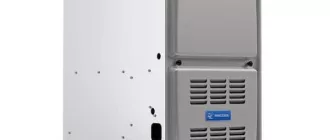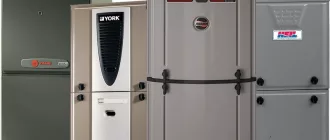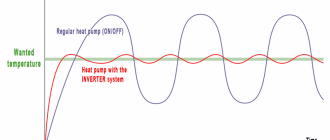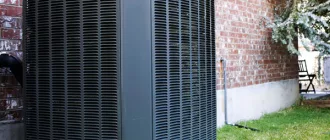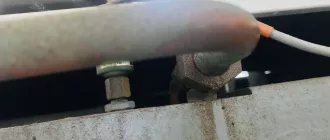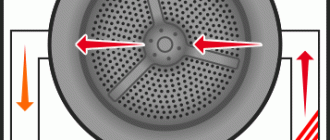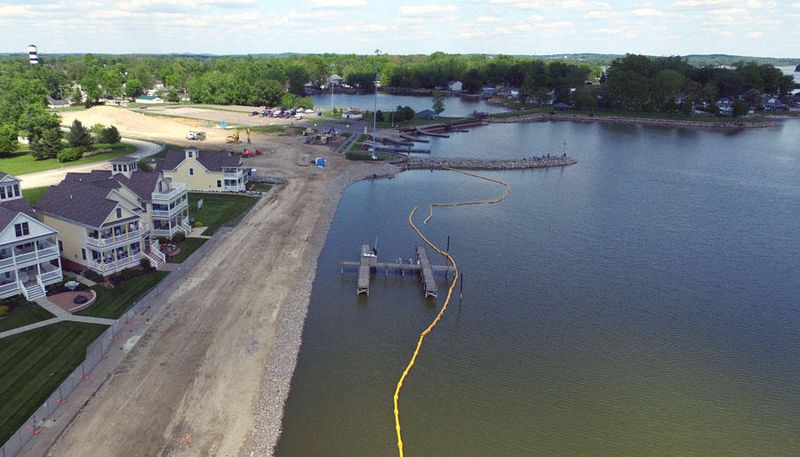
Allergies? Improve Your Buckeye Lake Home’s Indoor Air Quality
Allergies can be a constant source of discomfort for many individuals, especially when they affect the respiratory system. If you or your loved ones suffer from allergies, taking steps to improve the air quality in your home is crucial. Buckeye Lake, with its beautiful surroundings, may seem like a place where indoor air quality wouldn’t be a concern. However, ensuring your home’s air is clean and allergen-free can make a significant difference in alleviating allergy symptoms.
The first step to improving indoor air quality is to identify and eliminate potential sources of allergens. This includes regularly cleaning and vacuuming your home, especially areas where dust tends to accumulate. Additionally, using allergen-proof bedding covers and washing your bedding regularly in hot water can help reduce the amount of dust mites in your home.
Another significant contributor to poor air quality is indoor pollutants, such as volatile organic compounds (VOCs) and chemicals from cleaning products and furniture. To mitigate this, opt for natural cleaning products and consider purchasing houseplants that act as natural air purifiers. Plants like aloe vera, spider plants, and peace lilies are known for their ability to filter harmful toxins from the air.
In addition to reducing allergens and pollutants, maintaining proper ventilation is essential for improving air quality. Opening windows at least once a day, particularly during times when outdoor air pollution is low, allows fresh air to circulate and flush out stagnant air. You can also consider investing in air purifiers or HVAC systems with high-efficiency filters to further enhance the air quality in your Buckeye Lake home.
Why Indoor Air Quality is Important
Indoor air quality is crucial for the health and well-being of your family in Buckeye Lake. Poor indoor air quality can lead to a range of health issues, including allergies, asthma, and respiratory problems. It is important to improve the air quality in your home to create a healthier living environment.
Poor indoor air quality can be caused by various factors, such as dust, pet dander, pollen, and volatile organic compounds (VOCs) from household products. These pollutants can accumulate in your home and circulate through the air, causing irritation and health problems when inhaled.
By improving the indoor air quality in your Buckeye Lake home, you can alleviate allergies and reduce the risk of respiratory problems. This can be achieved by taking simple steps like regular cleaning and dusting, using air purifiers, and maintaining proper ventilation. Filtering the air can help remove allergens and pollutants, while ensuring proper ventilation allows fresh air to circulate and removes stale air.
Additionally, it is important to address any sources of indoor air pollution in your home, such as mold or mildew. These can release spores and toxins into the air, leading to respiratory issues. By identifying and rectifying these issues, you can significantly improve the overall air quality in your home.
Investing in indoor air quality improvement is an investment in the health and well-being of your family. By creating a clean and pollutant-free environment, you can reduce allergies, improve respiratory health, and enhance overall quality of life. Don’t underestimate the importance of indoor air quality – take the necessary steps to improve it in your Buckeye Lake home.
The Link Between Indoor Air Quality and Allergies
Improving the air quality in your Buckeye Lake home can have a significant impact on alleviating allergies. Indoor air quality refers to the level of pollutants and allergens present in the air inside your home. Poor air quality can trigger allergies and worsen existing symptoms.
There are several factors that contribute to poor indoor air quality. Dust mites, pet dander, pollen, mold, and mildew are some common allergens found in homes. These allergens can circulate in the air and cause allergic reactions when breathed in.
One way to improve your home’s indoor air quality is by regularly cleaning and vacuuming to remove these allergens. Use high-efficiency particulate air (HEPA) filters in your vacuum cleaner to effectively capture small particles. Additionally, washing bedding and curtains regularly can help reduce the presence of allergens in your home.
Proper ventilation is also essential for maintaining good indoor air quality. Ensure that your home is well-ventilated by opening windows whenever possible and using exhaust fans in high-moisture areas, such as bathrooms and kitchens.
Controlling humidity levels in your home is another crucial aspect of improving indoor air quality. High humidity can create an ideal environment for mold and mildew growth, while low humidity can cause dryness and irritate respiratory passages. Use a dehumidifier or humidifier to maintain optimal humidity levels.
Regularly changing and cleaning air filters in your HVAC system is also important for improving indoor air quality. Air filters help to trap allergens and particles, preventing them from circulating throughout your home. Consult your HVAC system manufacturer’s instructions to determine how often the filters should be replaced or cleaned.
Lastly, consider using air purifiers to further enhance the air quality in your home. Air purifiers can help remove pollutants and allergens from the air, providing cleaner and healthier indoor air for you and your family.
By taking steps to improve your home’s indoor air quality, you can alleviate allergies and create a healthier living environment. Your Buckeye Lake home should be a haven from allergens, allowing you to breathe easier and enjoy a better quality of life.
Common Indoor Allergens
When it comes to allergies, the air quality in your Buckeye Lake home plays a crucial role. There are several common indoor allergens that can trigger or worsen allergic reactions. By identifying these allergens and taking steps to reduce their presence, you can improve the indoor air quality and alleviate allergies.
Here are some of the most common indoor allergens:
| Dust Mites | Microscopic insects that thrive in warm, humid environments. They can be found in bedding, upholstered furniture, and carpets. |
| Pollen | Tiny grains released by plants for reproductive purposes. Pollen can be brought into your home through open windows and doors or carried indoors on your clothes and pets. |
| Mold | A type of fungus that thrives in damp and humid conditions. It can grow on walls, ceilings, and other surfaces, as well as in poorly ventilated areas. |
| Pet Dander | Tiny particles of skin, hair, or feathers that animals shed. Even if you don’t have pets, pet dander can be brought into your home on your clothes or through ventilation systems. |
| Cockroaches | These insects produce allergenic proteins that can trigger allergic reactions. They can hide in cracks and crevices and are attracted to food and moisture sources. |
| Dust | A combination of particles such as dead skin cells, soil, pollen, and dander. Dust can accumulate on surfaces and be easily stirred up into the air. |
| Volatile Organic Compounds (VOCs) | Chemicals emitted by various household products and materials, such as cleaning products, paints, and furniture. VOCs can cause irritation and allergic reactions. |
To minimize exposure to these allergens, it’s important to keep your home clean, control humidity levels, regularly change air filters, and consider using air purifiers. Removing carpets, keeping pets out of bedrooms, and sealing any cracks or gaps can also help reduce allergen levels in your home.
By taking steps to reduce common indoor allergens, you can improve the air quality in your Buckeye Lake home and alleviate allergies for a healthier living environment.
The Effects of Poor Indoor Air Quality on Health
Poor indoor air quality can have a significant impact on your health and well-being. In Buckeye Lake, where the outdoor air quality can already be a concern, it is essential to take steps to improve the air quality within your home.
Allergies are a common problem that many people in Buckeye Lake face. Poor indoor air quality can exacerbate these allergies and make symptoms worse. Dust, pollen, pet dander, and other contaminants can circulate in the air, leading to sneezing, coughing, and itchy eyes. By improving the indoor air quality in your home, you can alleviate these allergy symptoms and create a healthier living environment.
In addition to allergies, poor indoor air quality can also have more severe health effects. The air inside your home can contain harmful pollutants such as volatile organic compounds (VOCs), mold spores, and bacteria. Breathing in these pollutants can cause respiratory problems, worsen asthma, and even lead to long-term health issues.
Poor indoor air quality can also affect your sleep and overall quality of life. If the air in your home is filled with contaminants, it can lead to restless nights and difficulty breathing. This can result in daytime fatigue, decreased productivity, and a general feeling of unwellness.
Fortunately, there are several ways to improve the indoor air quality in your home and alleviate these health effects. Regularly changing air filters, using an air purifier, and maintaining proper ventilation can all help remove contaminants from the air. Additionally, keeping a clean and clutter-free home can prevent the buildup of dust and other allergens.
By taking steps to improve the indoor air quality in your Buckeye Lake home, you can create a healthier living environment and alleviate the negative effects of poor air quality on your health.
Identifying Indoor Air Quality Issues in Your Home
When it comes to improving the indoor air quality in your Buckeye Lake home, it’s important to first identify any existing issues. Doing so can help alleviate allergies and create a healthier living environment for you and your family.
One of the main sources of indoor air pollutants is dust and dirt. These particles can accumulate over time and contribute to poor air quality. Regularly cleaning and vacuuming your home can help reduce the amount of dust and dirt in the air.
Allergens, such as pet dander and pollen, can also be a major cause of indoor air quality issues. If you or your family members have allergies, it’s important to take steps to minimize exposure. This may include keeping pets off furniture and regularly changing air filters in your heating and cooling system.
Mold is another common indoor air pollutant that can cause allergies and respiratory issues. Look for signs of mold growth, such as a musty odor or discoloration on walls or ceilings. If you suspect mold, it’s important to address the issue promptly and seek professional help if necessary.
Chemical pollutants, such as cleaning products and air fresheners, can also negatively impact indoor air quality. Opt for natural, unscented cleaning products whenever possible and avoid using air fresheners that contain harmful chemicals.
Radon is a colorless and odorless gas that can seep into your home through cracks in the foundation. Long-term exposure to radon can be harmful to your health. Consider getting your home tested for radon to ensure that it’s not a contributing factor to poor indoor air quality.
| Dust and dirt | Poor air quality, allergies | Regular cleaning and vacuuming |
| Allergens | Allergies, respiratory issues | Minimize exposure, change air filters |
| Mold | Allergies, respiratory issues | Address mold promptly, seek professional help if needed |
| Chemical pollutants | Poor air quality, respiratory issues | Use natural, unscented products |
| Radon | Long-term health effects | Test your home for radon |
By identifying and addressing these indoor air quality issues in your Buckeye Lake home, you can improve the air you breathe and alleviate allergies. Creating a healthier living environment is essential for your overall well-being.
Signs of Poor Air Quality
Poor indoor air quality in your Buckeye Lake home can lead to a variety of health issues, particularly for those with allergies. Here are some signs that your home’s air quality may be subpar:
|
Allergy symptoms: If you or your family members frequently experience symptoms such as sneezing, coughing, itching, or watering eyes, it could be a sign of poor indoor air quality. Allergens, such as dust mites, pet dander, pollen, and mold spores, can become trapped in your home and exacerbate allergies. |
|
Unpleasant odors: If you notice persistent unpleasant odors in your home, it may indicate poor air quality. These odors could be caused by mold, mildew, pet odors, or volatile organic compounds (VOCs) emitted by household cleaning products or building materials. Proper ventilation is essential for removing these odors and improving air quality. |
|
Dust accumulation:  If you find that your home quickly accumulates dust, even after cleaning, it could be a sign of poor indoor air quality. Dust particles can circulate in the air and settle on surfaces, causing respiratory issues and worsening allergies. Regular dusting and air purification can help combat this problem. |
|
Increased humidity: If your home feels excessively humid, it may indicate poor air circulation and high moisture levels. Excessive humidity can promote the growth of mold and mildew, which can worsen allergies and cause respiratory issues. Using dehumidifiers and ensuring proper ventilation can help reduce humidity levels and improve air quality. |
|
Respiratory issues: If you or your family members frequently experience coughing, wheezing, or difficulty breathing, it could be a result of poor indoor air quality. Particulate matter, such as dust, pollen, and smoke particles, can irritate the respiratory system and exacerbate pre-existing conditions like asthma. Regular air filter replacement and proper ventilation can help alleviate these symptoms. |
If you notice any of these signs, it’s important to take steps to improve indoor air quality in your Buckeye Lake home. Proper ventilation, regular cleaning, and the use of air purifiers can all contribute to cleaner and healthier air.
Testing Indoor Air Quality
If you want to improve the indoor air quality in your Buckeye Lake home and alleviate allergies, it’s important to first assess the current state of your home’s indoor air. Testing the indoor air quality can help you identify potential issues and determine the best course of action to take.
There are several methods available for testing indoor air quality. One common method is to use an air quality monitor, which measures various factors such as temperature, humidity, particulate matter, and volatile organic compounds (VOCs). These monitors provide real-time data and can help you identify any immediate concerns.
In addition to air quality monitors, you can also consider hiring a professional indoor air quality testing service. These professionals have specialized equipment and knowledge to perform comprehensive testing and analysis of your home’s indoor air. They can identify specific pollutants or allergens that may be present and offer tailored solutions to improve the air quality.
When testing indoor air quality, it’s important to consider both visible and invisible factors. While you may be able to see certain pollutants like dust or mold, there may be others, such as VOCs or allergens, that are not visible to the naked eye. Testing can help detect these invisible contaminants and provide a more accurate picture of the air quality in your home.
Once you have tested the indoor air quality in your Buckeye Lake home, you will have a better understanding of the specific issues you need to address. This information will enable you to make informed decisions and take appropriate steps to improve the air quality and alleviate allergies in your home.
Steps to Improve Indoor Air Quality
If you live in Buckeye Lake and struggle with allergies, it’s important to take steps to improve the air quality in your home. Poor indoor air quality can exacerbate allergy symptoms and make them even more difficult to manage. Here are some steps you can take to improve the air quality in your Buckeye Lake home:
1. Keep your home clean: Regularly dust and vacuum your home to remove allergens such as dust mites, pet dander, and pollen. Pay special attention to areas where these allergens tend to accumulate, such as carpets, rugs, and upholstery.
2. Maintain proper ventilation: Ensure that your home has proper ventilation to prevent the buildup of stale air and pollutants. Open windows whenever possible to let in fresh air, and use exhaust fans in the kitchen and bathroom to remove odors and moisture.
3. Control humidity levels: High humidity levels can promote the growth of mold and dust mites, both of which can trigger allergies. Use a dehumidifier to maintain humidity levels between 30% and 50%, and fix any leaks or sources of moisture in your home.
4. Use air purifiers: Consider using air purifiers to remove airborne allergens and pollutants. Look for purifiers with HEPA filters, as they are effective at capturing small particles such as pollen, pet dander, and dust mites.
5. Avoid smoking indoors: Smoking indoors can release harmful chemicals and pollutants into the air, aggravating allergies and compromising indoor air quality. If you or a family member smokes, make sure to do so outdoors.
6. Regularly change air filters: Make sure to regularly change the air filters in your heating and cooling system. This will help remove airborne allergens and keep the air in your home clean and fresh.
By taking these steps to improve the air quality in your Buckeye Lake home, you can alleviate allergies and create a healthier living environment for you and your family.
Keep Your Home Clean and Dust-Free
In order to improve the indoor air quality in your Buckeye Lake home and alleviate allergies, it is important to keep your home clean and dust-free. Dust and allergens can easily accumulate in carpets, furniture, and other surfaces, so regular cleaning is essential.
Here are some tips to help you keep your home clean and dust-free:
| 1. Vacuum regularly: | Use a vacuum cleaner with a HEPA filter to effectively remove dust and allergens from carpets and rugs. Vacuum at least once a week, paying special attention to high-traffic areas. |
| 2. Dust surfaces: | Use a damp cloth or microfiber cloth to dust surfaces, including furniture, shelves, and electronics. Avoid using dry dusting methods, as they can cause the dust to become airborne. |
| 3. Wash bedding regularly: | Bedding can accumulate allergens like dust mites, so it’s important to wash sheets, pillowcases, and blankets regularly in hot water. Consider using allergen-proof covers on pillows and mattresses. |
| 4. Remove clutter: | Clutter can trap dust and make cleaning more difficult. Keep your home organized and free of unnecessary items to reduce dust accumulation. |
| 5. Use air purifiers: | Air purifiers can help remove airborne allergens and improve the quality of the air in your home. Place them in bedrooms and other common areas to maximize their effectiveness. |
| 6. Change filters: | Regularly change the filters in your HVAC system to prevent dust and allergens from circulating throughout your home. Consider using high-quality filters that are specifically designed to capture allergens. |
| 7. Keep windows closed: | During allergy season or when the outdoor air quality is poor, keep your windows closed to prevent pollen and other allergens from entering your home. |
By following these tips and keeping your home clean and dust-free, you can improve the indoor air quality and reduce the allergy symptoms experienced by you and your family in your Buckeye Lake home.
Control Humidity Levels
Humidity levels in your Buckeye Lake home can greatly affect the air quality and exacerbate allergies. High humidity can lead to the growth of mold and dust mites, both of which can trigger allergic reactions. On the other hand, low humidity can cause dryness and irritation in the respiratory tract.
To improve the air quality and alleviate allergies, it is important to control the humidity levels in your home. Here are some tips:
- Use a dehumidifier in areas prone to high humidity, such as the basement or bathroom.
- Keep windows and doors closed on humid days to prevent excess moisture from entering your home.
- Repair any leaks or areas of water damage to prevent mold growth.
- Use exhaust fans in the kitchen and bathroom to remove excess moisture.
- Avoid over-watering indoor plants, as the excess moisture can contribute to higher humidity levels.
- Consider using a hygrometer to monitor the humidity levels in your home and maintain them between 30-50%.
By controlling the humidity levels in your Buckeye Lake home, you can improve the air quality and create a healthier environment for allergy sufferers. Follow these tips to help alleviate allergies and breathe easier in your own home.
Avoid Indoor Smoking
One of the most effective ways to improve the air quality in your Buckeye Lake home is to avoid indoor smoking. Smoking not only releases harmful chemicals and pollutants into the air, but it also leaves behind a strong lingering odor that can be difficult to eliminate.
Secondhand smoke is a serious health hazard, especially for young children, the elderly, and those with respiratory conditions or allergies. By banning smoking indoors, you can protect the respiratory health of everyone in your home and create a cleaner and healthier environment.
If you or someone in your household is a smoker, consider making your home a smoke-free zone. Create designated outdoor smoking areas that are well-ventilated and away from windows and doors, to prevent smoke from entering the house. Encourage smokers to properly dispose of cigarette butts and ash outside to further reduce the impact on indoor air quality.
In addition to eliminating smoke, it’s important to regularly clean and ventilate your home to remove any residual odor or pollutants. Wash fabrics such as curtains, upholstery, and bedding regularly to get rid of any lingering smoke particles. Open windows and use fans to allow fresh air to circulate throughout the house. Investing in air purifiers can also help remove smoke particles and improve the overall air quality in your home.
| 1. Improved air quality |
| 2. Reduced risk of secondhand smoke exposure |
| 3. Elimination of lingering smoke odor |
| 4. Healthier environment for everyone in the home |
Invest in Air Purifiers
If you want to improve the indoor air quality in your Buckeye Lake home and alleviate allergies, investing in air purifiers is a great solution. Air purifiers are designed to remove contaminants and pollutants from the air, making it cleaner and healthier to breathe. They can help reduce allergens such as dust, pollen, pet dander, and mold spores, which are common triggers for allergies.
When choosing an air purifier for your home, consider the size of the room and the specific needs of your family. Look for purifiers with HEPA filters, as they are highly effective at capturing particles as small as 0.3 microns. Additionally, consider features like activated carbon filters, UV lights, and ionizers, which can further enhance the air purification process.
Placing air purifiers strategically throughout your home can help ensure that the air in every room is clean and free of allergens. Consider placing them in bedrooms, living areas, and other commonly used spaces. Running the air purifiers consistently will help maintain good air quality and alleviate allergy symptoms.
Regularly cleaning and maintaining your air purifiers is essential to keep them functioning properly. Follow the manufacturer’s instructions for filter replacement and cleaning. This will ensure that the purifiers continue to effectively remove allergens and maintain the desired indoor air quality in your home.
Investing in air purifiers is a proactive step you can take to improve the air quality in your Buckeye Lake home and alleviate allergies. By removing allergens and pollutants from the air, these devices can help create a healthier and more comfortable living environment for you and your family.
Proper Ventilation
Proper ventilation is crucial for improving indoor air quality in your Buckeye Lake home and alleviating allergies. Good airflow helps to remove pollutants, allergens, and excess moisture from the air, creating a healthier living environment for you and your family.
One way to improve ventilation is by opening windows and doors to allow fresh air to come in and stagnant air to be expelled. This can be especially beneficial during the spring and fall seasons when the weather is mild. However, it is important to consider outdoor air quality and pollen count before opening windows, as this can exacerbate allergies for some individuals.
In addition to natural ventilation, installing proper mechanical ventilation systems can also help improve indoor air quality. These systems, such as exhaust fans and air purifiers, can remove pollutants and allergens from the air, ensuring a cleaner and healthier environment inside your home.
Regularly cleaning and maintaining your home’s HVAC system is another important aspect of proper ventilation. Dust and debris can accumulate in the ducts and filters, leading to poor air quality. By regularly cleaning and replacing filters, you can ensure that the air circulating in your home is free from allergens and other contaminants.
Proper ventilation is essential for improving the air quality in your Buckeye Lake home and reducing allergies. By implementing these strategies, you can create a healthier indoor environment for you and your family to enjoy.
Preventive Measures to Reduce Allergens
If you want to improve the indoor air quality in your Buckeye Lake home and alleviate allergies, here are some preventive measures you can take:
- Regularly clean and vacuum your home to remove dust and allergens that may be lingering in carpets, furniture, and other surfaces.
- Ensure good ventilation in your home by opening windows and using exhaust fans in areas prone to moisture, such as the bathroom and kitchen.
- Invest in high-quality air filters for your HVAC system to trap airborne particles and allergens.
- Minimize the use of harsh cleaning products and chemicals, as these can release harmful pollutants into the air.
- Keep your pets clean and groomed to reduce the amount of pet dander and allergens in your home.
- Consider using hypoallergenic bedding and pillow covers to protect yourself from dust mites.
- Avoid smoking indoors, as tobacco smoke can worsen allergies and pollute the air.
- Regularly change and clean your air conditioning and heating system filters to prevent the circulation of allergens.
- Control humidity levels in your home to prevent the growth of mold and dust mites. Use a dehumidifier if necessary.
- Keep windows and doors closed, especially during high pollen seasons, to prevent outdoor allergens from entering your home.
By implementing these preventive measures, you can create a healthier indoor environment and reduce the impact of allergens on your allergies.
Q&A:
What are some common indoor allergens that may be affecting my home in Buckeye Lake?
Common indoor allergens that may be affecting your home in Buckeye Lake include dust mites, pet dander, pollen, mold, and tobacco smoke.
How can I improve the indoor air quality in my Buckeye Lake home?
To improve indoor air quality in your Buckeye Lake home, you can take several steps. These include regularly cleaning and vacuuming your home, using air purifiers or filters, maintaining proper ventilation, keeping humidity levels in check, and avoiding smoking indoors.
What are the health risks associated with poor indoor air quality?
Poor indoor air quality can lead to various health risks, including allergies, asthma, respiratory problems, and other respiratory illnesses. It can also worsen existing conditions and cause discomfort and irritation to the eyes, nose, and throat.
What are some signs that indicate poor indoor air quality in my Buckeye Lake home?
Signs that indicate poor indoor air quality in your Buckeye Lake home include excessive dust accumulation, musty or unpleasant odors, frequent allergy or asthma symptoms, and visible mold or mildew growth. You may also notice an increase in respiratory issues among family members or a general feeling of discomfort indoors.
Are there any specific steps I can take to reduce allergens in my Buckeye Lake home?
Yes, there are specific steps you can take to reduce allergens in your Buckeye Lake home. These include using allergen-proof bedding covers, regularly washing bedding and stuffed animals, keeping pets out of bedrooms, regularly dusting and vacuuming, keeping windows closed during high pollen seasons, and using a dehumidifier to control moisture levels.
How can I improve the indoor air quality in my Buckeye Lake home?
To improve the indoor air quality in your Buckeye Lake home, you can follow a few simple steps. First, make sure to keep your home clean by regularly vacuuming, dusting, and mopping. Second, consider investing in an air purifier to filter out pollutants and allergens. Third, avoid smoking or allowing others to smoke in your home, as this can significantly decrease air quality. Lastly, be mindful of the products you use in your home, such as cleaning supplies and fragrances, as these can release harmful chemicals into the air.
What are some common allergens that can be found in indoor air?
Some common allergens that can be found in indoor air include dust mites, mold, pet dander, pollen, and certain chemicals. These allergens can trigger allergic reactions and respiratory issues in sensitive individuals. It’s important to address the sources of these allergens and take steps to improve the indoor air quality to alleviate allergies.

